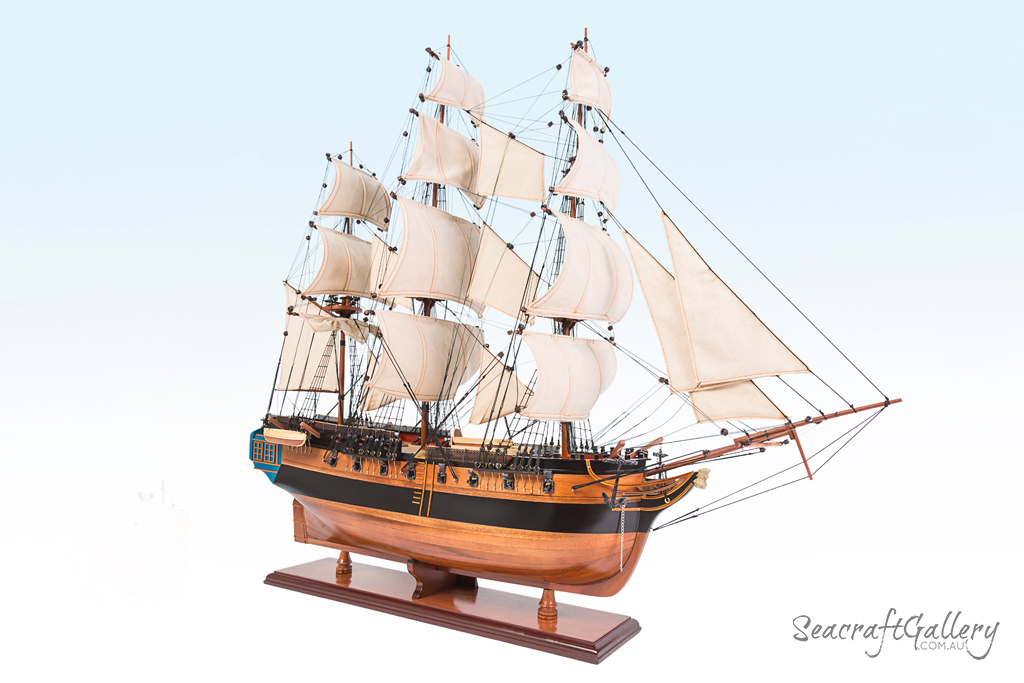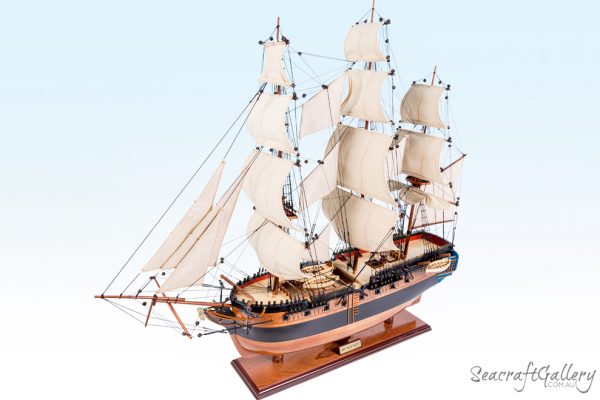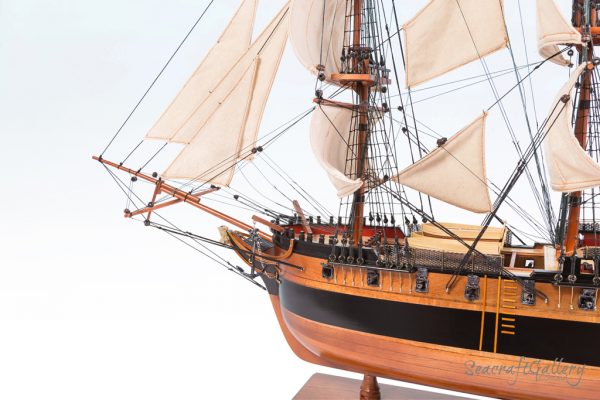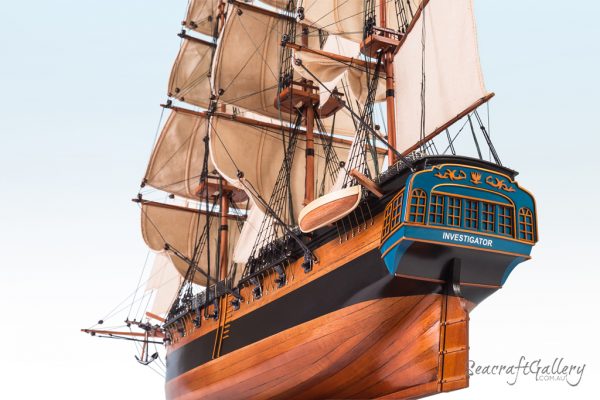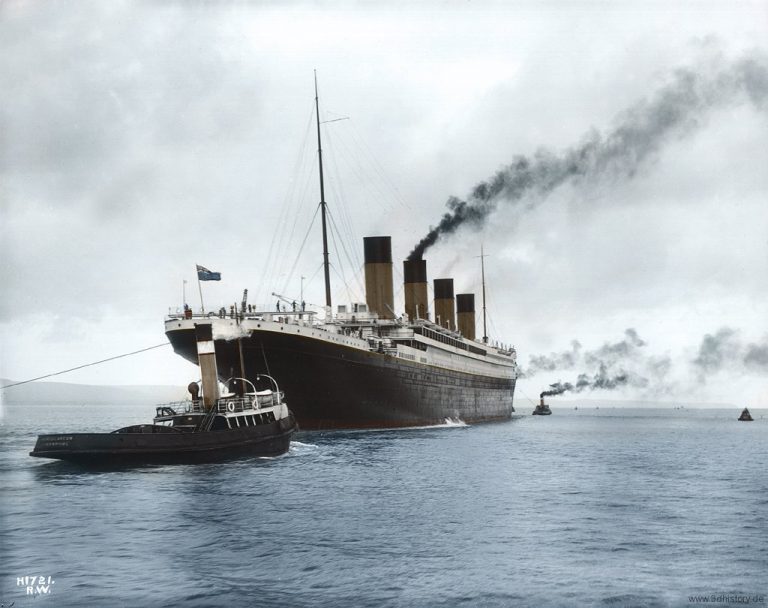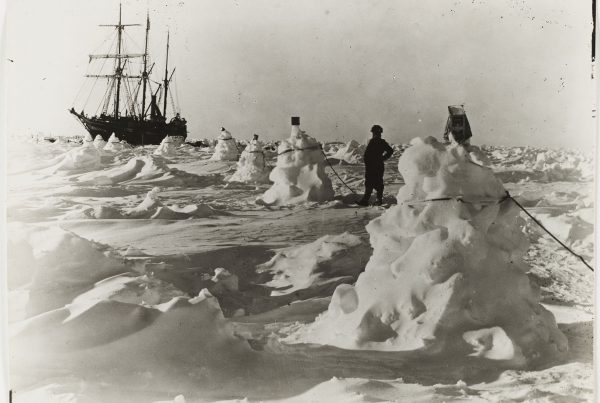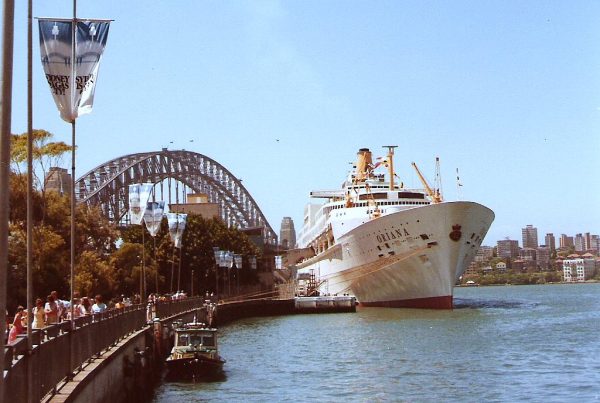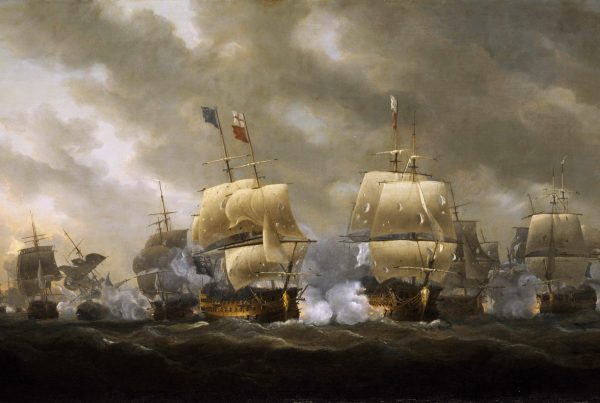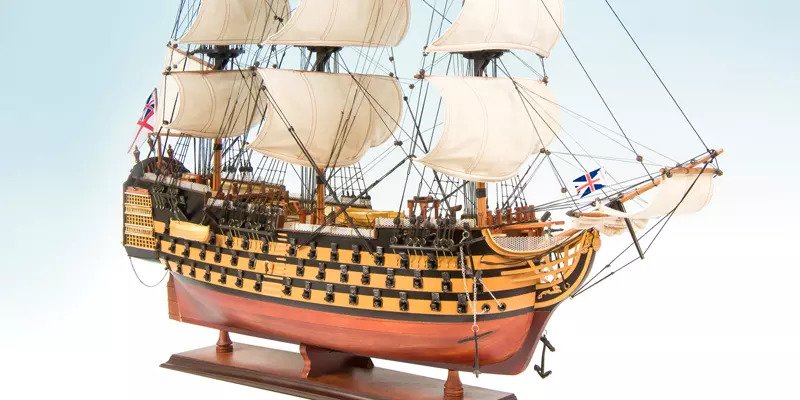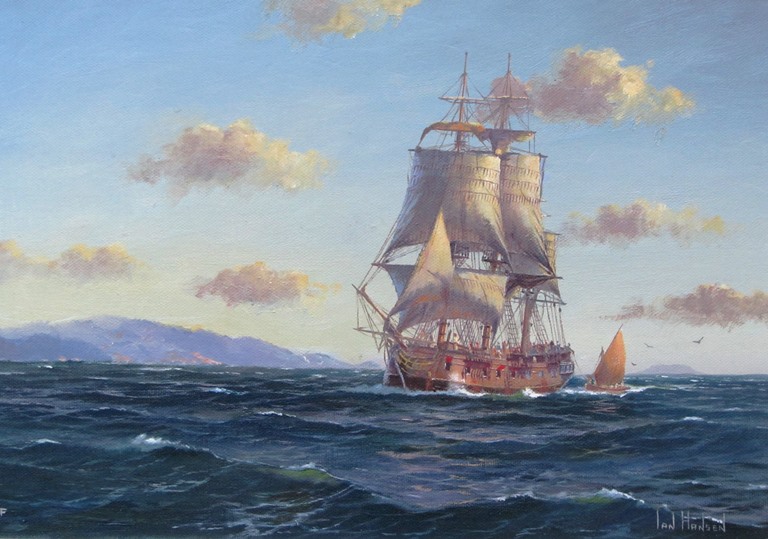
Matthew Flinders (1774 – 1814), the first man to circumnavigate Australia and record his voyage on the HMS Investigator
Matthew Flinders (born March 16th, 1774) was a renowned English explorer, navigator, and naval officer who circumnavigated (sailed entirely around) Australia and mapped its coastline.
In fact, he and George Bass were the first Europeans who realized that Tasmania was an island and sailed around it.
Flinders first embarked on their quest to Australia in 1795 for the British Navy on a ship named the “Reliance”. He and his friend George Bass who was a surgeon on the ship bought an 8-foot-long boat and named it the “Tom Thumb”, in order to explore the treacherous coastline of southern Australia.
They would start their journey by sailing south of Sydney (to Botany Bay) and row up the Georges River. Between 1795 and 1798, they mapped out much of the southeast coast of Australia and event sailed around the Island of Tasmania completely. Flinders then returned to England in 1800 on the “Reliance”.
Matthew Flinders and his discoveries on the HMS Investigator
In the epic voyage of circumnavigating Australia that lasted from 1801 to 1803, Matthew Flinders was the first one to circumnavigate the island known as New Holland. On 18th July 1801, Flinders would sail from Portsmouth in the HMS Investigator ship and explore the ‘unknown coast’ of Australia while also sighting Cape Leeuwin of Western Australia on 6th December. The English were also aware that the French had sent out expeditions to the southern continent as long as nine months back and were highly suspicious of their motives given the two countries were at war.
By 27th January 1802, the HMS Investigator ship was near the head of the Great Australian Bight and from February 1802 to March 1802, the British Crew would survey the Spencer’s Gulf, explore the Kangaroo Island, and charter the St. Vincent Gulf. In April, the Investigator Boat revised the Kangaroo Island and on 8th and 9th of April, they unexpectedly met an obstacle in the form of the French expedition under the command of Nicolas Baudin at a place that later came to be known as Encounter Bay.
Flinders then continued to journey eastwards and leave the present day South Australian waters on 19th April and reached Port Jackson in May 1802. Once the ship had been refitted and the crew was rested, they added to the Cook’s earlier charts and then charted the Gulf of Carpentaria. The ship repairs were a pressing need which is why Flinders was forced to sail to Timor. He made a stop in his survey and arrived back in Port Jackson (Sydney) in June 1803 which concluded his circumnavigation.
As the Investigator boat was in a horrible condition, it was deemed unsuitable for voyages, so Flinders would sale in the Porpoise and return to England, only to get shipwrecked at the Wreck Reef. Using the cutters of Porpoise, Flinders managed to return to Port Jackson and arrange a rescue of the crew. In the second attempt to return home, he set out on the Cumberland, but as the ship needed repair, he was forced to seek assistance at the Ile de France (Mauritius). As England and France had resumed the war, the Governor General of Ile de France would go on to detain Flinders for the next 6 ½ years.
During the period when he was detained, Flinders drew up all his charts and in a letter to Sir Joseph Banks he would champion the name “Australia” for the entire southern continent instead of something like “Terra Australis” or “New Holland”. He finally gained his freedom and left Ile de France in June 1810 and arrived back in England in October of that year. His account of his expedition “A voyage to Terra Australis, with Atlas” was published on 18th July 1814. Sadly, he passed away the next day.
Matthew Flinders and his outstanding contributions
Flinders and his outstanding achievements were of special interests to South Australians. Without Baudin’s and Flinders’ maritime explorations, and their detailed charts produced, the western and southern colonies of Australia could not have been settled. Flinders would also bestow many names of South Australian places along the coast. He is also commemorated in the naming of locations like the Flinders chase, Flinders Ranges, and Flinders University.
Flinders contributed a great deal to the history and foundation of Australia as a continent and holds an important place in their history. Even after his expeditions and discovery of places, he was still detained for over 6 years. Once he was released, he published his work and sadly passed away soon after.
Recently, the remains of Captain Matthew Flinders, the first European to circumnavigate Australia were found during an archaeological dig at the London railway terminus more than 170 years after they had disappeared. This recently discovered coffin showed that Captain Flinders was buried on 23rd July 1814.
His remains were found by archaeologists who were working on the highly controversial HS2 high-speed rail project. Around 61,000 skeletons will be removed from the St. James’s Gardens where the HS2 rail route station will be built near London Euston station.
Seacraft Gallery is a leading supplier of handcrafted wooden model ships and boats. If you are looking for a replica of the HMS Investigator then contact us today for more information.











